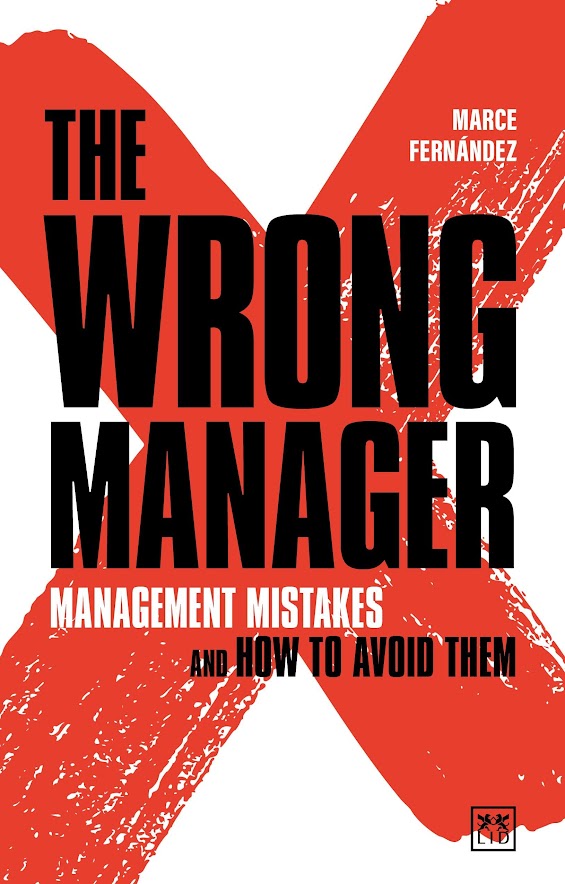Everybody commits errors, including yourself, yet that doesn’t imply you can’t enhance your judgment capabilities. In this captivating manuscript, management advisor Marce Fernández explains how to track “hints” that lead to wise selections and evade succumbing to your predispositions. Some choices, such as what to order for lunch, are inconsequential; however, significant decisions that veer off course can harm or jeopardize your profession or your business. Imagine the scenario of the record executive at Decca Records who rejected signing The Beatles in 1962 or the decision-makers at Excite.com who opted not to purchase Google for $750,000. You can perform better — discover how.

- Key Points
- Abstract
- An in-depth exploration deals with general decision-making, leaving out managerial decision processes.
- Cognitive predispositions escalate flawed decision crafting
- Decisions stand as preferences, not gambles
- Avert conflating data with knowledge
- Disruptions to the status quo often mandate tough decisions
- In the contemporary volatile, uncertain, complex, and ambiguous world, decision-making is consistently challenging
- Having an excessive number of alternatives complicates the process of managerial decision-making
- Pay attention to the “hints” guiding intelligent choices
- Corporate decision-making often hinges on one individual
- About the Author
- Review
Key Points
- A wide-ranging exploration delves into general decision-making, excluding managerial decisions specifically.
- Cognitive predispositions escalate flawed decision crafting.
- Decisions stand as preferences, not gambles.
- Avert conflating data with knowledge.
- Disturbances to the status quo frequently mandate difficult choices.
- In the contemporary volatile, ambiguous, intricate and uncertain world, decision-making is consistently challenging.
- An excess of alternatives complicates the process of managerial decision-making.
- Take note of the “hints” directing you towards astute selections.
- Corporate decision formulation usually comes down to one individual.
Abstract
An in-depth exploration deals with general decision-making, leaving out managerial decision processes.
Supervisors commit blunders. Occasionally, these missteps in decision creation are monumental, business-ending, career-wrecking errors. Other times, inaccurate judgments are minor in scale — just mundane daily operational lapses.
“By scrutinizing the ultimate circumstances that induced business inaccuracies, we will grasp how to sidestep them, hence boosting the outcomes and the standing of our establishments.”
Scholars have thoroughly scrutinized decision crafting and decision hypotheses, yet few of their formal discoveries discretely pertain to executing managerial-level decisions within a corporation. Additionally, individuals who investigate decision-making notice that many are hesitant to own up to their blunders, thus the lessons drawn from trial and error don’t always come to light.
Cognitive predispositions escalate flawed decision crafting
Nadia Papamichail, a senior decision-systems lecturer at the University of Manchester, highlights that cognitive predispositions, including egocentric bias and confirmation bias, exacerbate faulty judgment assembly.
“We can define cognitive predispositions as systematic deviations from rational verdict.”
Egocentric bias denotes individuals’ inclination to assess their own deeds and choices from a self-centered viewpoint. Confirmation bias stands for the propensity to perceive evidence that upholds your selections and to disregard contradictory evidence. Additional cognitive predispositions encompass:
- “The story fallacy” — Individuals habitually assume an illusory causal relationship influences their data.
- “The availability-misweighing tendency” — People tend to believe that existing knowledge about a problem suffices.
- “The overconfidence effect” — Ignorance frequently fosters confidence, yet acquiring genuine knowledge serves as a more dependable confidence booster.
Decisions stand as preferences, not gambles
When making a decision, you are opting between choices — not wagering. Gambles involve chance, which should never play a role in astute corporate decision formulation. Enterprises aren’t gambling houses.
“If you’re not confident…envisioning the articulation of the decision to your peers or associates, it’s advisable to reconsider.”
Decisions hinge on knowledge, not intuitions, therefore arm yourself with as much pertinent information and knowledge as possible. Discern precisely what you necessitate understanding.
Avert conflating data with knowledge
Data and knowledge both play pivotal roles in decision-making, though they aren’t synonymous. Grasping how data and knowledge integrate into the overall decision-making progression commences with reflection, that is, contemplating and dissecting your circumstance.
“Decision makers consistently make incorrect choices…address the unsuitable dilemmas…and can’t manage uncertainty.” (decision studies lecturer Nadia Papamichail)
Establish the criteria essential for making a sagacious decision and pinpoint the information resources and steps needed. Consider any relevant limitations and circumstances.
Instituting a “learning value chain” aids in shaping your decision. Commence with setting a goal, and then amassing fitting data. Execute the essential analysis to convert this data into valuable information. Subsequently, analyze the information to glean the most valuable knowledge. Translate this knowledge into wisdom that you can utilize to make your decision. Follow this process:
- Comprehend the challenges you face.
- Delineate your aim.
- Secure the top-level knowledge to evaluate and strategize your approach.
- Identify all plausible alternatives.
- Choose the most suitable alternative as your preferred choice.
This rigorous yet validated decision-making route hinges on clear access to systematic, refined information.
Disruptions to the status quo often mandate tough decisions
In the corporate realm, catalysts of change and disruptions in the established order often necessitate prompt decisions by managers. For instance, profit margins dwindle. Rivals arise as formidable new competitors in the market. It becomes imperative for the company to expeditiously onboard additional personnel. Business partners engage in conflicts.
“Strategy has become more intricate than ever, whereas human-resources concerns are more intricate as well, alongside sales, customer service, finance, operations, marketing, or technology.”
To steer you away from what you must avoid doing, learn from these real-life instances of corporate managers’ poor judgments.
- A manager sanctions the kick-off of a major fresh operation without prior comprehensive analysis. The new enterprise performs inadequately.
- A manager recruits a new employee who ultimately proves to be completely inappropriate.
- Managers neglect to communicate with all relevant employees and other affected parties concerning the radical reorganization of a company’s divisions.
- A manager endorses the acquisition of new software that complicates the company’s operations and fails to resolve internal issues.
- Exclusively focusing on technical aspects, managers green-light their company’s foray into a new — and relatively unfamiliar — foreign market. They overlook local taxes or the regulatory landscape.
In the contemporary volatile, uncertain, complex, and ambiguous world, decision-making is consistently challenging
Managers are — or should be — advocates of decision-making. Decision-making is fundamentally what management revolves around, yet crucial decisions are never effortless to arrive at. This rings particularly true in the present volatile, uncertain, intricate, and ambiguous (VUCA) milieu. In such an environment, individuals often must select courses of action amidst unnerving uncertainty.
“Decision-making remains the primary endeavor of any manager…Decision-making is a constant activity where choices are made in various forms and significance; whether they are simple or intricate choices, individual or collective decisions.”
Many administrators lack a formal decision-making blueprint, framework, or methodology which leads them to repeatedly make the same errors. These mistakes can be classified into three groups:
1. “Most frequently occurring” — Decisions that are intricate and pertinent.
2. “Moderately occurring” — Decisions that are challenging and involve critical situations.
3. “Infrequent” — Decisions that touch on matters of “manageable significance” or present clear-cut options, yet still impact crucial matters.
Having an excessive number of alternatives complicates the process of managerial decision-making
Arriving at the correct decision typically entails evaluating more than two distinct paths. Administrators often find themselves having to choose from a multitude of perplexing options.
“The variables that influence any managerial decision have multiplied significantly in recent decades.”
Even after making their initial decisions, managers find themselves in situations where the decision-making process is far from over. Considering multiple alternatives exposes them to multiple mistakes. Real-life, substantial errors include:
1. When Stephen Wozniak, working as a computer engineer at HP in 1970, created a personal computer on his own time and money. HP’s CEO and subsequently its board rebuffed the chance to market his invention. Wozniak left HP and later founded Apple with Steve Jobs.
2. In 1975, Pepsi introduced the “Pepsi Challenge,” a taste test between Pepsi and Coca-Cola. Pepsi emerged as the winner, prompting Coca-Cola to change its beloved formula. However, consumers strongly opposed the move, leading Coke to revert to its traditional recipe.
3. In 1993, bond trader John Meriwether established Long Term Capital Management (LTCM). Despite hiring top talent, including a former Federal Reserve vice president and two Nobel laureates, the firm made catastrophic investment decisions in 1998, resulting in significant losses. The US Federal Reserve intervened to prevent disruption to the global financial system.
Pay attention to the “hints” guiding intelligent choices
Intelligent decision-making relies on the rational, clever, disciplined application and fusion of knowledge, analysis, and teamwork. Making the right decision also hinges on following a dynamic process.
“History is rife with poor decisions, yet in the corporate realm, distinguishing between good and bad decisions may not be so straightforward.”
Initially, allocate adequate time to ponder over all relevant issues and influencing factors. Rather than viewing your considerations as part of a formal or rigid decision-making process, perceive each element as “clues” leading to an effective decision-making approach and outcome. Consider the following:
- Will your decision have significant ramifications, or will its effects be relatively trivial? In the latter scenario, opting for a “quick and satisfactory solution” or the “initial viable choice” may suffice.
— When making decisions, many individuals tend to focus on prominent issues rather than the overall scenario, system, or context. Concentrating solely on the most apparent factors is short-sighted and perilous.
— Decision-makers mustn’t regard their stated decision-making objectives as infallible certainties. Instead, mull over, refine, and enhance the context of your decision-making.
— Assess whether the overall context in which the decision must be made is “certain or uncertain.” Contextual certainty invariably involves “implicit or explicit data.” Decision-makers may simplify their decision-making issues through uncomplicated mathematical reasoning.
— Regardless of the criticality of the issues or the time pressure, refrain from hastening decisions.
— In general, eschew the most evident solution.
— The more intricate the situation, the greater the number of pertinent elements involved. Disregard no aspects.
— When charting your course, weigh all criteria to streamline your thought process. Disregard intuition.
— Decision-making constitutes a process. How you carry out your decisions is equally vital. Many might argue that the execution of decisions holds more significance than the decisions themselves. If you struggle to envision clear methods to implement your decisions, reconsider them.
— Doubts about your decisions aren’t necessarily detrimental. Doubts can prompt reassessment, potentially leading to improved decisions.
Corporate decision-making often hinges on one individual
Most corporations operate in hierarchies, where CEOs reside at the pinnacle, senior executives underneath, managers further down, and employees and other staff at the base of the organizational structure. Typically, one senior figure at each level of executive authority will make the final planning decision. However, on occasion, decisions are arrived at by teams or groups within the corporate framework.
“Opting to do everything is not a viable option.”
Irrespective of their position or level within the organization, corporate decision-makers need to think clearly and logically. This necessitates that executives, managers, and organizational thinkers strive to maintain healthy, stress-free lifestyles. Making prudent decisions becomes considerably more challenging if one is continually fatigued, anxious, or unwell.
About the Author
A management consultant focusing on strategy, Marce Fernández is an MBA educator.
Review
In his book “The Wrong Manager: Management mistakes and how to avoid them” Marce Fernández aims to enlighten business leaders and aspiring managers about the prevalent mistakes made by managers and ways to avert replicating them.
The book is structured into 11 chapters, each addressing a distinct management mistake or pitfall. Fernández utilizes real-world examples and anecdotes from his consulting experience to illustrate each error. For every chapter, he offers clear and specific recommendations for managers aiming to steer clear of the pitfalls.
One of the initial chapters spotlights the error of prioritizing incorrect metrics and key performance indicators (KPIs). Fernández argues that many managers become fixated on quantitative outputs like sales figures, profit margins, or task completion rates when they should be concentrating more holistically on customer satisfaction, employee morale, and long-term business viability. He advocates for a balance of “hard” and “soft” metrics to obtain a comprehensive view of organizational health.
Subsequent chapters delve into other prevalent pitfalls such as excessive micromanagement, failure to set transparent expectations, authoritarianism, favoritism, absence of self-awareness, and inept change management. Following a thorough dissection of each mistake, specific remedies are provided. For instance, the author suggests that managers transition from directing work to coaching team members, articulating expectations in writing, and blending firmness with empathy.
Rotating tasks and assignments to lessen biases.
Fernández also discusses people-related mistakes like bullying subordinates, subpar hiring decisions, and inadequate onboarding processes. He suggests methods for fostering respect in the workplace through empathy, conducting thorough interviews, and setting new hires up for success in their respective roles. Clear indicators of toxic behaviors are presented to assist managers in recognizing issues within their own leadership styles.
Moreover, the book delves into systemic mistakes such as insufficient communication, inadequate delegation of duties, and neglecting employee development. Fernández argues that these errors often arise from managers attempting to handle too many tasks themselves instead of empowering their teams. He stresses the importance of transparent information sharing, accountability across all levels, and continuous skills development.
Case studies and interviews with managers are interspersed throughout the chapters, reinforcing Fernández’s views on common sources of mistakes and how leaders can foster high-performing, unified workplaces alternatively. The anecdotes drive home lessons learned from both triumphs and setbacks. Managers from diverse industries will find it easy to relate to the scenarios depicted.
Overall, the book offers a thorough examination of prevalent management blunders distilled from Fernández’s extensive advisory experience across multiple industries. Each chapter follows a problem-solution structure for straightforward implementation of recommendations. While managers with varying levels of experience and personality traits may identify with certain mistakes more than others based on their strengths and weaknesses, the broad scope ensures all readers can extract relevant insights.
Fernández’s informal, direct writing style ensures readability, although some may perceive the anecdotal examples as overused at times. Nonetheless, the grounding in real-world scenarios enhances effective learning. Both new leaders and seasoned veterans can benefit from the book’s delineation of pitfalls alongside specific, actionable solutions supported by research and case studies.
Strengths:
- Relatable illustrations: Fernández employs real-life examples to elucidate each point, facilitating understanding and connection for readers.
- Pragmatic guidance: The book offers actionable advice for managers at all levels, from entry-level to executive positions.
- Well-structured: The book is segmented into clear sections, aiding in ease of comprehension and navigation.
Weaknesses:
- Lack of depth: Some topics receive only cursory coverage, leaving readers desiring more information.
- Repetitious: Certain points are reiterated throughout the book, potentially making the content seem repetitive.
Key Insights:
- Efficient communication is vital: Effective communication is crucial for successful management. Managers must be adept at active listening, inquiring effectively, and providing explicit directives.
- Delegate responsibilities proficiently: Managers must master the art of entrusting tasks to their team members, granting them autonomy to complete assignments and advance professionally.
- Set a precedent: Managers should lead by example, displaying the conduct and values they expect from their team members.
Recommendation:
“The Wrong Manager” proves to be a valuable asset for anyone keen on enhancing their management skills or aiming to evade common management pitfalls. Fernández’s practical counsel and relatable illustrations make the book both engaging and informative. Though some subjects may feel reiterated, the book’s strengths overshadow its weaknesses. I wholeheartedly endorse “The Wrong Manager” for individuals striving to become more adept managers.
In conclusion, “The Wrong Manager: Management mistakes and how to avoid them” serves as an invaluable handbook for any manager aspiring to hone their interpersonal skills and evade common leadership pitfalls that impede professional and organizational advancement. Fernández astutely dissects a broad spectrum of errors and offers practical solutions to help managers leverage their strengths and bypass potential weaknesses. This book merits a spot on the shelves of both fledgling and seasoned business leaders committed to perpetual self-betterment.


